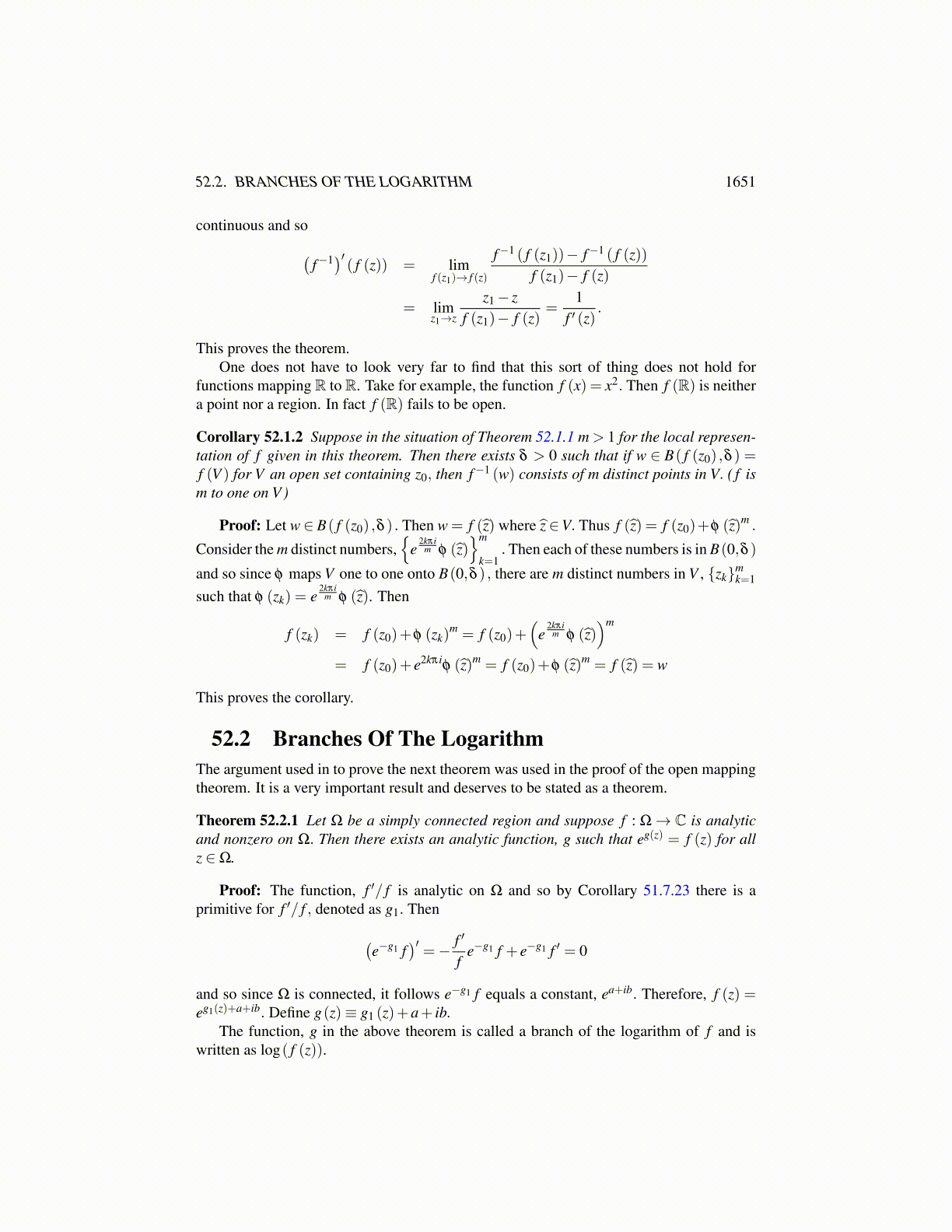
Chapter 52
The Open Mapping Theorem52.1 A Local Representation
The open mapping theorem, is an even more surprising result than the theorem about thezeros of an analytic function. The following proof of this important theorem uses an inter-esting local representation of the analytic function.
Theorem 52.1.1 (Open mapping theorem) Let Ω be a region in C and suppose f : Ω→ Cis analytic. Then f (Ω) is either a point or a region. In the case where f (Ω) is a region, itfollows that for each z0 ∈Ω, there exists an open set, V containing z0 and m ∈ N such thatfor all z ∈V,
f (z) = f (z0)+φ (z)m (52.1.1)
where φ : V → B(0,δ ) is one to one, analytic and onto, φ (z0) = 0, φ′ (z) ̸= 0 on V and
φ−1 analytic on B(0,δ ) . If f is one to one then m = 1 for each z0 and f−1 : f (Ω)→Ω is
analytic.
Proof: Suppose f (Ω) is not a point. Then if z0 ∈ Ω it follows there exists r > 0 suchthat f (z) ̸= f (z0) for all z ∈ B(z0,r)\{z0} . Otherwise, z0 would be a limit point of the set,
{z ∈Ω : f (z)− f (z0) = 0}
which would imply from Theorem 51.5.3 that f (z) = f (z0) for all z ∈Ω. Therefore, mak-ing r smaller if necessary and using the power series of f ,
f (z) = f (z0)+(z− z0)m g(z) ( ?
=((z− z0)g(z)1/m
)m)
for all z ∈ B(z0,r) , where g(z) ̸= 0 on B(z0,r) . As implied in the above formula, onewonders if you can take the mth root of g(z) .
g′g is an analytic function on B(z0,r) and so by Corollary 51.7.5 it has a primitive on
B(z0,r) , h. Therefore by the product rule and the chain rule,(ge−h
)′= 0 and so there exists
a constant, C = ea+ib such that on B(z0,r) ,
ge−h = ea+ib.
Therefore,g(z) = eh(z)+a+ib
and so, modifying h by adding in the constant, a+ ib, g(z) = eh(z) where h′ (z) = g′(z)g(z) on
B(z0,r) . Letting
φ (z) = (z− z0)eh(z)m
implies formula 52.1.1 is valid on B(z0,r) . Now
φ′ (z0) = e
h(z0)m ̸= 0.
1651